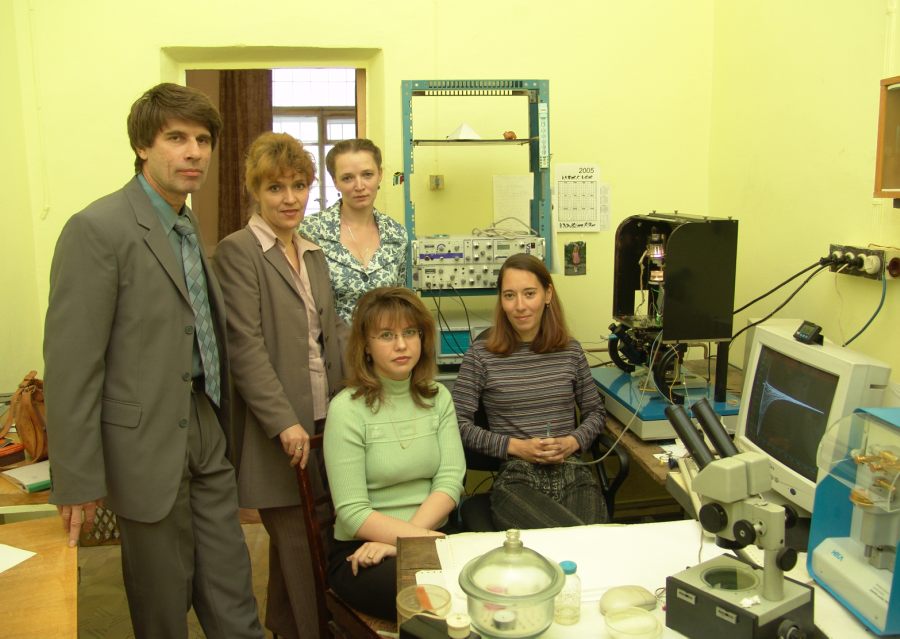In 1997, to study mechanisms of excitability, mechanisms signal transmission from membrane receptors to ion channels, role of membrane ion channels in the primary sensory coding, a Sector was founded. Its staff included several researchers of Laboratory physiology of reception; the Sector was headed by Biological Sciences Doctor B. V. Krylov. In 1999, the Sector was transformed into Laboratory.

This laboratory has the modern experimental base including the patch-clamp method, microelectrode technique, tissue culture method. In its work the laboratory uses methods of mathematical modeling for calculations impulse activity, based on the membrane ion theory, as well as quantumchemical calculations of the equilibrium geometry of various molecules.
New data are obtained which indicate a peculiar role of the sodium pump as a signal transducer. Development of this approach has allowed describing in detail the scheme of regulation of excitability of the slow (tetrodotoxin-insensitive) sodium channels responsible for generation of nociceptive signal. This regulation can be realized owing to activation of opioid receptors transducing signal to Na + ,K + -ATPase at the expense of regulation of the sodium pump itself and, finally, owing to modification of gate structures and selective filter of slow sodium channels, These three targets are systematically studied at present by a pharmacological action and owing to use of the laser technique.
At present, investigations have been carried out with the goal to prove participation of Na+,K+-ATPase in « reception » of infrared (IR) irradiation. The laboratory develops a hypothesis that responses of the sensory neuron to the low-intensity laser irradiation (that does not lead to a change of temperature) is of the resonance « quantum » character. The combined use of the laser technique, the clamp-patch method, and the tissue culture procedure has allowed obtaining data about the « reception » of the IR irradiation, these data confirming our suggestion that the sodium pump can participate in the signal transduction. This suggestion was confirmed by studies carried out on cardiac tissue explants, retina, and spinal ganglia.
Using the organotypical cultivation of sensory ganglia, a study was performed for several years of the neurotrophic effects of protease inhibitors, peptides, and other physiologically active substances on sensory neurons. When studying effects of complex peptides (cortexin, epithalamine, thymaline, and their synthetic analogs) the tissue-specific action of these peptide bioregulators has been revealed.
In the investigations of the Laboratory, a number of modern first-class devices are used, a part of them kindly supplied by von Humbold Foundation (Germany) as a gift to the Institute.
A fruitful international scientific cooperation is performed with a number of Universities of Germany, USA, Sweden, Finland, Turkey.
Main publications:
[1] Ilyinski O.B. Processes of excitation and inhibition in single mechanoreceptors (Pacinian corpuscles) // Nature. 1965. Vol.208, N 5009. p.351-353
[2] Krylov B.V., Makovsky V.S. Spike frequency adaptation in amphibian sensory fibres is probably due to slow Ê channels // Nature. 1978. Vol.275, N 5680. p. 549-551
[3] Akoev G.N., Alekseev N.P., Krylov B.V. Mechanoreceptors: Their functional organization. Springer -Verlag. London , Heidelberg , N.-Y. 1988
[4] Krylov B.V. Ionic channels of the excitable membrane. Encyclopedia UNESCO www.eolss.net 2002
|